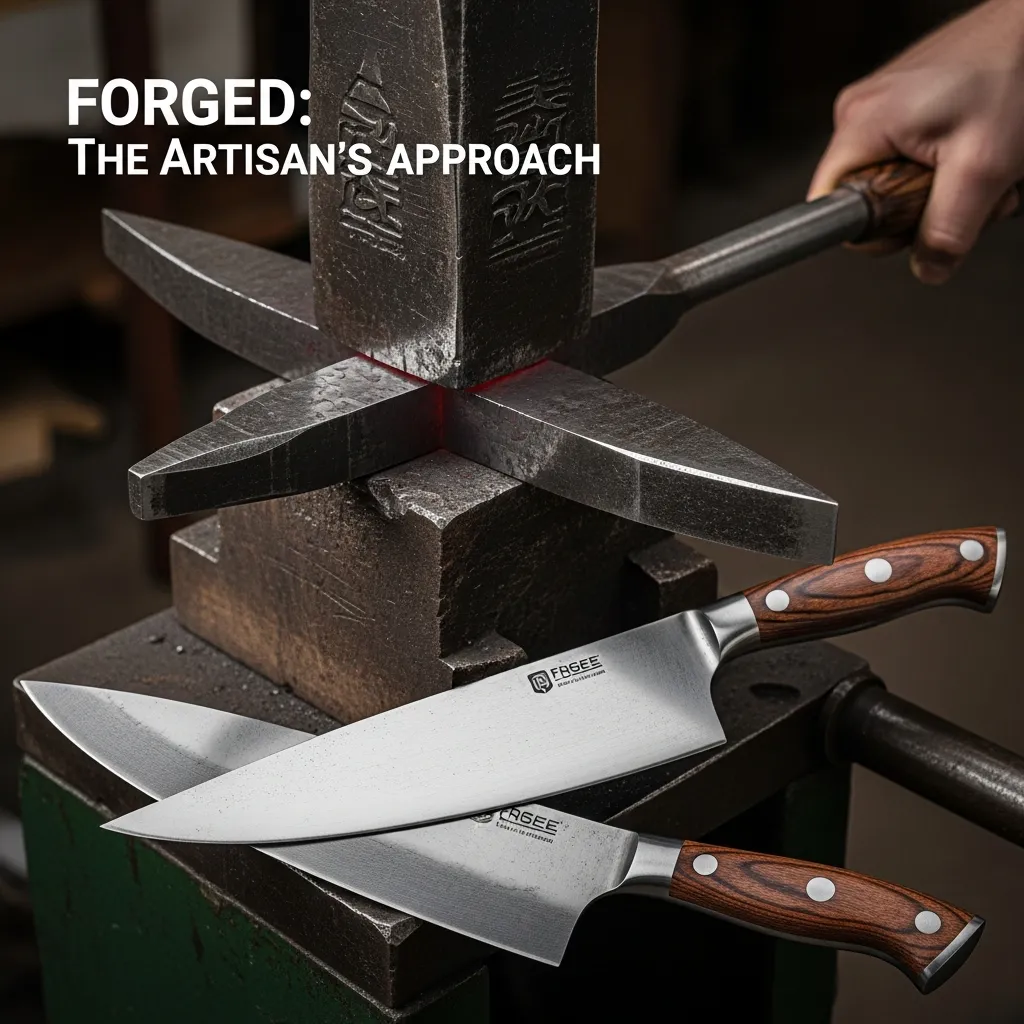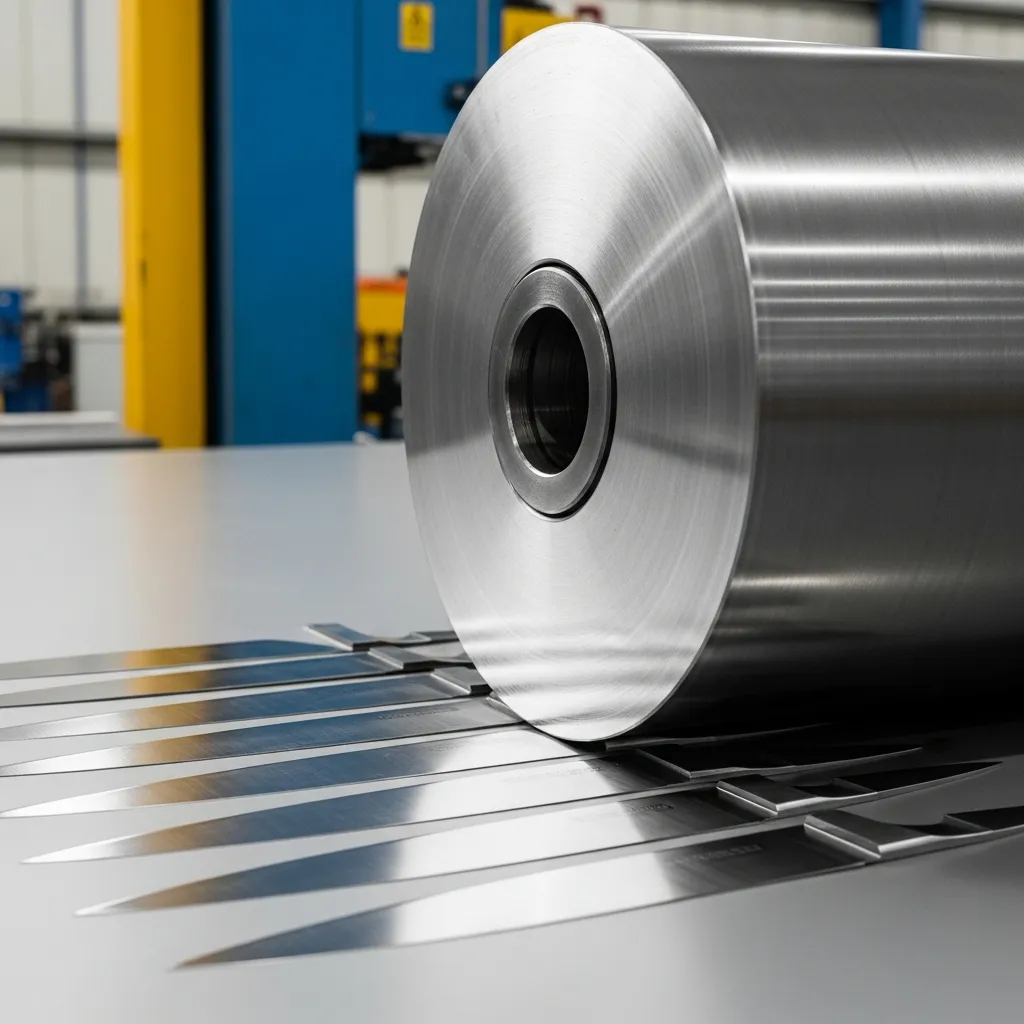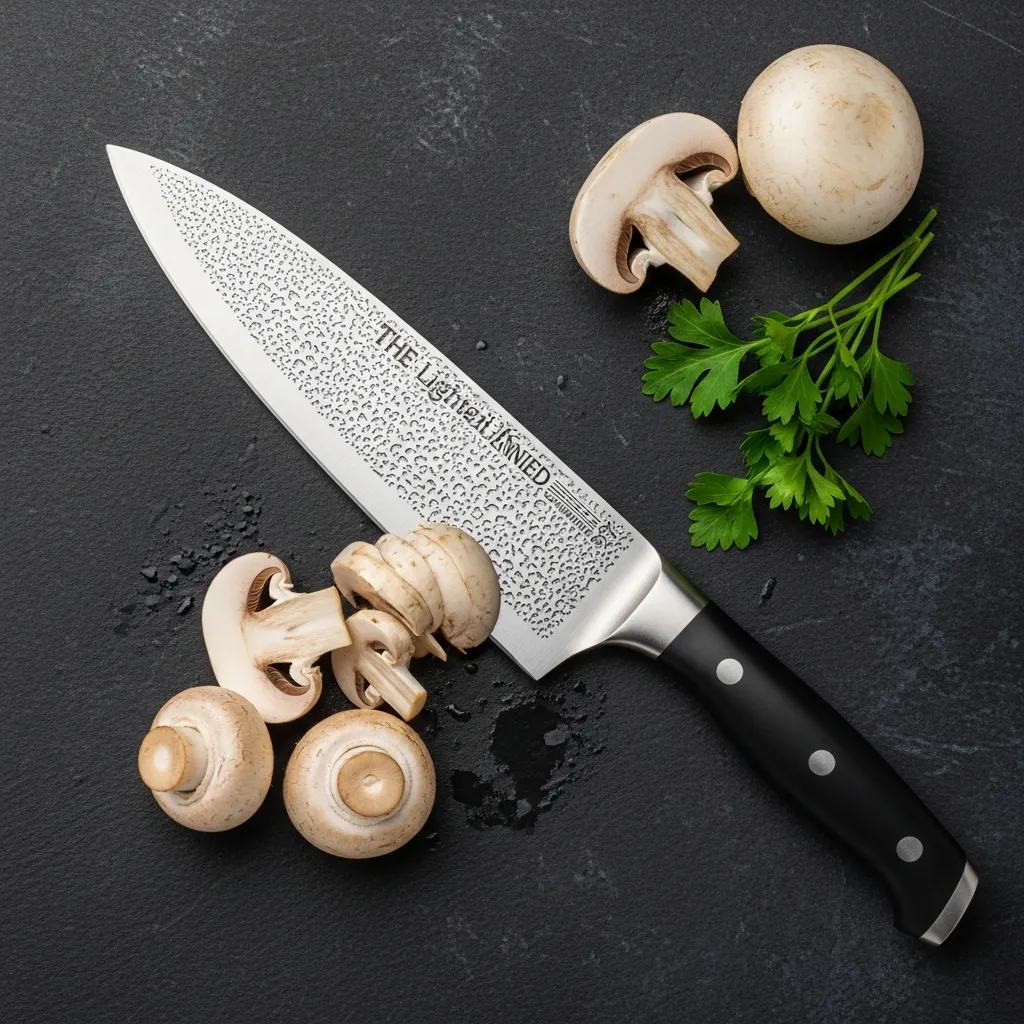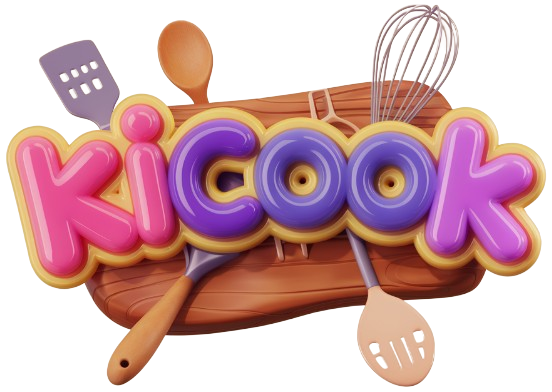The core difference is in their creation. Forged knives are made from a single piece of steel that is heated and pounded into shape, resulting in a heavier, more durable blade with a bolster. Stamped knives are cut from a large sheet of steel, much like a cookie cutter, leading to a lighter, more flexible, and often more affordable blade.
Forged vs. Stamped Knives: Finding Your Perfect Kitchen Partner
I’ve spent countless hours in my home kitchen, and I know the feeling. You’re trying to slice a tomato, and instead of a clean cut, you’re crushing it. Dicing an onion becomes a tear-filled chore. A lot of that frustration comes down to your tools, specifically, your knives. If you’ve ever felt your kitchen work is harder than it should be, you’re not alone.
The heart of the matter often boils down to one big question: what’s the real deal with forged versus stamped knives? I’ve used both extensively, from a cheap stamped knife I bought in college to the heftier forged chef’s knife I saved up for. I’m here to share what I’ve learned, not from a textbook, but from real use at my own cutting board. My goal is to help you cut through the marketing hype and find a knife that feels like an extension of your own hand.
Let’s get into the details.
How They’re Born: The Manufacturing Process
The journey of a knife begins long before it hits your block, and the creation method defines its entire character.
Forged Knives: The Artisan’s Approach
Imagine a blacksmith at a forge, heating a single, solid bar of steel until it’s glowing red-hot. They then hammer and pound that steel into the shape of a blade. This is the essence of forging, an ancient technique now often done with powerful hydraulic presses. This process aligns the steel’s internal structure, making it denser and stronger.

After the rough shape is formed, the blade is ground, sharpened, and heat-treated (a process of heating and cooling the steel to optimize its hardness and flexibility). Finally, handles, often made from durable materials like Pakkawood or textured polypropylene, are attached. This method requires more time, energy, and skill, which is reflected in the price.
Stamped Knives: The Efficient Cut

Now, picture a massive, rolling sheet of steel, similar to the metal used in car parts. A giant machine, acting like a precise cookie cutter, stamps out knife blade shapes from this sheet in a single, swift motion. These blank blades are then ground to create a cutting edge, sharpened, and heat-treated. Because this process is highly automated and produces very little material waste, it is significantly less expensive and faster. The result is a perfectly functional blade that is the starting point for many excellent value knives.
Feeling the Difference: Weight, Balance, and the Bolster
This is where your personal experience in the kitchen really diverges.
The Heft and Balance of a Forged Knife

Pick up a well-made forged knife. The first thing you’ll notice is the weight. It feels substantial and solid in your hand. This weight isn’t just for show; it helps the knife do some of the work for you. Gravity and the blade’s mass assist in slicing through tough ingredients like winter squash or a thick cut of meat. The balance point is usually right at the bolster (that thick junction between the blade and the handle), giving you a sense of control and reducing hand fatigue during long prep sessions.
The Lightness of a Stamped Knife

A stamped knife feels noticeably lighter and nimble. For tasks that require speed and precision, like chopping fresh herbs or slicing mushrooms, this lightness can be a real advantage. It’s easier to maneuver and puts less strain on your wrist. However, that lack of heft means you’ll need to supply more of your own force for tougher jobs, which can sometimes lead to less control.
The Bolster: A Key Differentiator
This is one of the most visual and functional differences. A bolster is the thick, often crescent-shaped piece of metal between the blade and the handle on a forged knife.
- Pros: It provides a safe and comfortable finger guard, preventing your hand from slipping onto the blade. It also adds crucial weight and improves the knife’s balance.
- Cons: A full bolster can make sharpening the entire length of the blade difficult, as it gets in the way of your sharpening steel or whetstone.
Stamped knives almost never have a full, forged bolster. Some may have a thin, added piece of metal to mimic the look, but it doesn’t serve the same functional purpose. The absence of a bolster makes sharpening the entire edge from heel to tip much simpler.
Performance Where It Counts: The Cutting Edge
How do these manufacturing methods translate to actual food preparation?
Durability and Edge Retention
Forged blades, due to their denser grain structure and rigorous heat treatment, are generally harder. The Rockwell Hardness Scale (HRC) is a measure of this. A forged knife often sits in a higher range (e.g., 56-62 HRC), meaning it resists wear and deformation better. Simply put, the edge retention is superior—it will stay sharper for a longer time between sharpenings.
Stamped knives typically have a lower Rockwell hardness. While they can get incredibly sharp out of the box, their edges may dull faster because the softer steel is more prone to bending and rolling. This is a key factor in long-term performance and maintenance.
Flexibility and Resilience
A stamped blade has more flexibility. You can sometimes even bend it slightly with your hands. This can be a benefit for certain tasks, like filleting fish, where a flexible blade helps you glide over bones and contours. However, this flexibility also means the edge is more vulnerable to twisting and damage if you hit a hard object like a bone.
A forged knife is rigid. It has very little flex, which provides stability and strength. This rigidity is what gives you clean, straight cuts through dense vegetables and prevents the blade from chattering or veering off course. It’s a workhorse built for power and precision.
“A sharp knife is a safe knife. A dull knife is the most dangerous tool in the kitchen.” – Jacques Pépin
Making the Choice: Which Knife is Right for Your Kitchen?
So, which one should you bring home? It’s not about one being universally “better”; it’s about which is better for you.
Choose a Forged Knife if:
- You cook frequently and want a tool that will last for years, if not a lifetime.
- You value heft and balance and prefer a knife that does some of the work for you.
- You’re willing to invest more upfront for superior edge retention and durability.
- You handle tough ingredients regularly and need a rigid, resilient blade.
- You want a knife that feels like a premium, professional tool.
Brands like Wüsthof, Zwilling JA Henckels, and Shun are renowned for their high-quality forged lines, often using high-carbon steel for exceptional performance.
Choose a Stamped Knife if:
- You are on a budget and need a reliable knife without a high cost.
- You are a casual cook or just starting to build your kitchen toolkit.
- You prefer a lighter, more nimble knife that’s easy to handle.
- You want a low-maintenance option that’s simple to sharpen.
- You need a good, functional knife for basic tasks or as a specialized tool (like a flexible fillet knife).
Many companies, including Victorinox (famous for their Swiss Army knives), produce outstanding stamped knives that offer incredible value and performance for their price. Their Fibrox chef’s knife is a consistent top-pick for a reason.
Caring for Your Investment: Maintenance and Sharpening
No matter which type you choose, proper care is non-negotiable. A $300 forged knife will be useless if it’s treated poorly, and a $30 stamped knife can be a star performer if it’s kept sharp.
- Sharpening: All knives dull over time. Using a whetstone is the gold standard for achieving a truly sharp, long-lasting edge. A honing steel is for maintenance—it doesn’t sharpen but realigns the microscopic teeth on the edge, keeping it straight between full sharpenings. Honing should be done frequently; sharpening less so.
- Storage: Never toss your knives loosely into a drawer. This damages the fine edge and is a safety hazard. Use a knife block, a magnetic strip, or blade guards.
- Cleaning: Always hand-wash and dry your knives immediately. The harsh environment of a dishwasher can damage handles and corrode the blade, not to mention it’s dangerous for whoever unloads it.
“Cooking is like love. It should be entered into with abandon or not at all.” – Harriet Van Horne
Frequently Asked Questions for Difference Between Forged and Stamped Knives
Can a stamped knife be as sharp as a forged knife?
Absolutely. When freshly sharpened, a stamped knife can be incredibly sharp, often razor-sharp. The difference lies in how long it holds that edge. The harder steel in a forged knife will maintain its sharpness through more use.
Is a full bolster on a forged knife a good thing?
It’s a mixed bag. The safety and balance are major benefits. However, over many years, as you sharpen the knife, the blade steel wears away while the bolster does not. This can create a gap that prevents the heel of the blade from contacting the cutting board. Many modern forged knives now feature a half-bolster or a shaped bolster to avoid this issue while retaining the benefits.
Are Japanese knives forged or stamped?
High-quality Japanese knives, such as those from brands like Global or Miyabi, are typically forged. They often use very hard, high-carbon steel, which contributes to their legendary sharpness and edge retention. However, they may have a different grind and feel compared to Western-style forged knives.
What’s the best type of knife for a beginner?
A good stamped chef’s knife, like the Victorinox Fibrox, is an excellent starting point. It’s affordable, sharp, and low-risk. It allows you to learn proper cutting technique and maintenance without a major financial commitment. As your skills and passion grow, you can then invest in a forged knife with a better idea of what you like.
Is a stamped knife “bad”?
Not at all! This is a common misconception. A well-made stamped knife from a reputable brand is a fantastic tool. The problem lies with ultra-cheap, poorly made stamped knives with terrible steel and unsafe handles. Focus on the brand and quality, not just the manufacturing method.
“The only real stumbling block is fear of failure. In cooking, you’ve got to have a what-the-hell attitude.” – Julia Child
Conclusion
In the debate between forged and stamped knives, there is no single winner only the right choice for your hand, your kitchen habits, and your budget.
If you are a passionate home cook who sees food preparation as a craft and you’re ready for a long-term partner, the heft, balance, and enduring edge of a forged knife will likely feel like a worthy investment. It’s a tool that can become a family heirloom.
If you are looking for a sharp, reliable, and incredibly cost-effective workhorse that makes daily meal prep easier, a high-quality stamped knife is a brilliant and smart choice. It proves that you don’t need to spend a fortune to get a great result.
I started with a stamped knife, and it served me well. It taught me how to care for a blade and what to look for in terms of feel. When I was ready, I upgraded to a forged chef’s knife, and that difference in weight and control was a revelation. Whichever path you choose, the most important thing is that you choose a good knife and then keep it sharp. Your tomatoes (and your fingers) will thank you.

